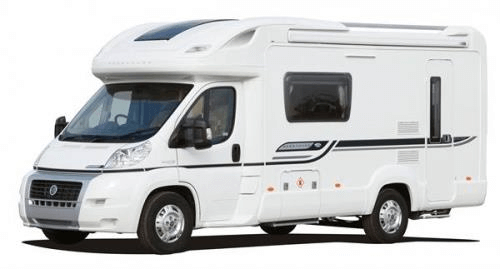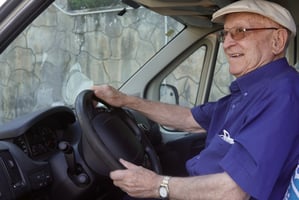Many Swift motorhome owners with a sky view panoramic window (skylight) above the driver/passenger...
When you’re driving from the UK to the EU, there are quite a few requirements you need to meet, in order to make sure your motorhome and set-up is legally compliant, and also that you’re properly prepared for the rules abroad when on the road. We’ve put together a list of the key things you need to know about, to make sure you have everything in place before you go…
Do I need a visa?
You don’t need a visa to travel within the EU if your trip's going to last less than 90 days in a 180 day period, and you are visiting as a tourist. Any longer than this, and you may need to apply for a visa for an extended stay. Have a look at the government’s info on this for the various different EU countries here.
For pets travelling with you, it looks like the government may be introducing new pet passports to overhaul the current, lengthy system, and to ease the burden of travel with your furry companions. We’ll keep you updated on that one, as things could be changing soon!

Number plates
You will need to display a UK identifier on the rear of your motorhome when travelling in Europe. If your number plate includes the UK on its own or the UK with the Union flag then you do not need a separate UK sticker, unless you are travelling to Spain, in which case a separate sticker is necessary. If your numberplate has a Euro symbol, no identifier or a national flag, or a GB sticker, you will need a separate UK sticker displayed on the rear of your vehicle (and you should cover up or remove the GB one).
Headlights
When abroad, you will need to either adjust your headlights (as you will be driving on the other side of the road and don’t want to startle drivers coming in the opposite direction), or you’ll need to add some headlamp deflectors. In some countries it is compulsory to use your headlights at all times - so do be aware of this and research the rules on where you are going before you leave the UK.

Long vehicles
If the whole length of your vehicle and anything you are towing exceeds 12m and you are travelling in Spain, you are required to fit marker boards to the back of your vehicle. You can either have two small boards or one large board but they must be placed at the back of the motorhome between 50cm and 150cm off the ground. Your marker board must be plain yellow in the centre with a red outline, be made out of aluminium, and be manufactured to ECE70 standard. You can buy these from many HGV suppliers.
Vehicles exceeding 3500kg in France
All motorhomes with a total weight exceeding 3.5 tonnes, driving in urban areas, must have Angles Morts stickers showing the position of the blind spots, visible on the sides and at the rear of the vehicle - you can search up online where to buy them and subsequently place them.
The stickers must be visible at all times from the sides and the rear of the vehicle, and at a height between 90 and 150 cms from the ground. They can be glued on, painted on to the bodywork or attached by any other means of fixing.
Vehicle documents
If you’re stopped by the police while driving in Europe, they may ask to see the necessary documents for your motorhome. So bring some proof that you own it, such as the V5 certificate, and also proof of your insurance and your MOT. Take your driving licence too - the photo card UK licence is all you need, unless you have the old-style paper licence in which case you’ll need to check to see if you need an International Driving Permit too.
Breakdown cover
In case of breakdown, make sure (before you go!) that you have European breakdown cover in place.
Equipment on board
In some countries, such as France and Italy, you need to have a reflective jacket on board for each person travelling which is accessible from within the vehicle. In most EU countries you need to have a warning triangle with you in case you break down - and in Spain you’ll need two if you are towing. Some EU countries require you to carry a first aid kit and spare bulbs for your lights. In France you might also want to carry a breathalyser, but there’s no longer a penalty for not doing so. In many countries it is also suggested that you carry a fire extinguisher. You can buy handy kits with all of these items in from travel retailers.
Interestingly, if you wear prescription glasses or contact lenses, in Spain and France it is now considered best practice to carry a spare pair if you are driving.

Sat nav no-nos
It’s illegal in most EU countries to have equipment that searches for mobile speed cameras. Also, if your sat nav displays fixed speed camera locations, this is illegal in some countries, for example in France and Germany. Dash cams are also illegal in some EU countries, so do check before travelling if you use one for your tow car.

Emission Zone stickers
Some major cities such as Paris and Madrid have low emission zones and require you to display a sticker, which you might want to apply for first before you set off. Have a look at this website which tells you about the different schemes in place per country.
Hopefully that is helpful! We will do an article on the new pet passport rules as soon as we can, so watch this space…
Disclaimer: This is for information only. We’ve taken every care to ensure that the information within this article is correct, but please make sure to keep up to date with the legislation and guidance on these topics as things could change.







